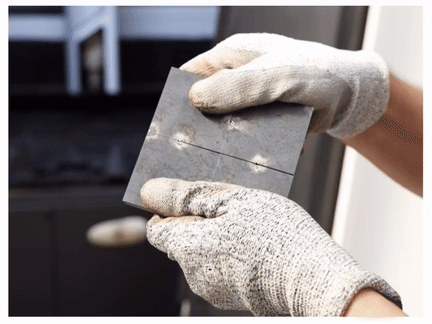BodorThinker Fiber Laser Cutting Function - Nano Joint
Smooth micro-Joint processing for fiber laser cutting machine

Cici
Feb 9, 2025Cutting challenges and nano joint solutions
During the operation of the laser cutting machine, the concept of micro-joint holds significant importance, particularly in ensuring the stability and precision of cutting processes. The micro-Joint is a cutting function that protects protects workpieces from potential warping during laser cutting operations.
Cutting challenges and nano joint solutions
When using a laser cutter, the sheet is supported by knife blade tables. Sometimes, cutting parts are not small enough to fall through the gap of the support knife blades or not big enough to be properly supported. In these cases, they may lose balance and tilt. The high-speed laser head may collide with them, causing the machine to stop at best and damaging the laser head at worst.
Micro-Joint functions provide an effective solution to prevent imbalances and collisions, ultimately enhancing the overall efficiency and accuracy of the cutting process. We offer three types of micro-Joints: simple micro-Joint, high-speed micro-Joint, and traceless nano joint.
1. Simply micro-joint
When programming the laser cutting of graphics, the closed contour is intentionally disconnected at several points. This keeps the parts attached to the surrounding material after cutting is completed, preventing them from falling off.
Advantages:
● Simple to use.
● Suitable for most workpieces.
Disadvantages:
● Slower cutting speed. Adding micro-Joints slightly slows down the cutting process.
● The cutting surface is not smooth, with obvious laser piercing points. Not suitable for high surface quality requirements.

2. High-speed micro-joint
The high-speed micro-Joint is an enhancement of the simple micro-Joint, primarily used for thin sheet cutting. The laser is turned off at the micro-Joint, but the cutting head continues to move without slowing down. The laser automatically stops outputting at the micro-Joint breakpoint and resumes cutting once the breakpoint is passed
Advantages:
● No effect on cutting speed. The laser head runs uninterruptedly, improving workpiece cutting efficiency.
Disadvantages:
● Not suitable for thick plates. Since the laser is directly turned off and on during operation, the thickness of the raw material will be limited to a certain range. This method cannot be used for thick plates that need to be pierced in advance.
3. Traceless nano joint
Traceless nano joint is controlled by laser, cutting but not completely penetrating the sheet, with no need to slow down or pause at the joint. There is no need to pause and pierce, so the use of traceless nano joint greatly reduces the customer's time, electricity, and material costs and facilitates better nesting software usage for layout.
Traceless nano joint can fix the part on the scrap skeleton through a small stop point at the bottom of the cut. It can effectively prevent the component from tilting, thereby achieving reliable sheet processing.
Traceless nano joint minimizes damage to the bottom of the contour, and the connection length is shorter than that of traditional Nano joint, making it easier to remove the part from the scrap skeleton.
Traceless nano joint does not require pausing and re-punching during cutting. It can achieve tighter layout, effectively improve material utilization, and maximize benefits for customers.
Advantages:
● Simplified cutting: Smaller joints make cutting easier.
● High material utilization: Compact laser nesting is possible.
● No effect on cutting speed: No need for piercing during cutting.
● Easier secondary processing: Smooth and traceless surface, easy to polish back.
Notice:
● This function have requirements for the system, the bus-type system is required to be configured. At present, all the machines sold by Bodor laser cutting machines are bus-type systems.
Traceless Nano joints meet the needs of customers with high surface quality requirements. Want to get this function? Contact Bodor to learn more details!





_20250212195207A874.png)